
And Two Books
by
Philip Fontana
Dedicated to the 50th Reunion
The Class of 1968, Rutgers College, New Brunswick, New Jersey
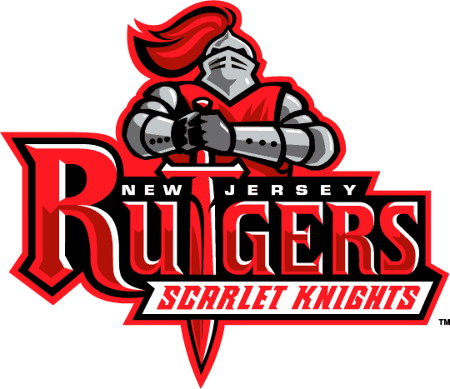
Rutgers University mascot, “The Scarlet Knights”
Excuse us for living, but while so many of you remember or have heard of that tumultuous year 1968, we the Class of 1968 put our claim on it. It was our year and, with it, all the misery and anguish that went with living through it, well, we put first claim on it all! Now having fluffed our feathers, we realize that so many of our generation shared in the same agonies from the military draft hanging over our heads to serving and dying or being wounded in Vietnam. – – And what about living through the upheaval of those uncertain times politically, socially, culturally, in an atmosphere of increasing anti-war protests!

The first paragraph of this 1968 Time Magazine cover story dated June 7, 1968! From what is left out, this obviously went to press just before Robert Kennedy’s death on June 6. “THE troubled and troublesome college Class of 1968 tends to have a sober, even tragic view of life. They were high school seniors in the year that John Kennedy, a politician who gained their trust and inspired their ambitions, was shot to death in Dallas. They were college seniors in the year that Martin Luther King, the Negro leader who tapped their idealism and drew them into social protest, was murdered in Memphis. Throughout all of their college careers, the war in Viet Nam has tormented their conscience, forced them to come to personal decisions relating self and society, country and humanity, life and death. With the lifting of most of the graduate-school deferments, the men of ’68 face the war and those existential issues as an immediate, wrenching reality.”
It is our good fortune that two excellent books have recently been published to help us understand the year 1968, even for those of us having lived through it. Both books were published late in the year 2017 to commemorate the 50th anniversary of that year 1968; Playing With Fire: The 1968 Election And The Transformation of American Politics, Penguin Press, 2017, 427 pages, by Lawrence O’Donnell, and Bobby Kennedy: A Raging Spirit, Simon & Schuster, 2017, 342 pages, by Chris Matthews. Both books concentrate their topics on that fateful year. Impossible to avoid are the years and events prior and after. Both authors do an admirable job and do justice to their respective stories.

You may know Lawrence O’Donnell as the host of “The Last Word,” his nightly TV program on MSNBC. He has led a varied and distinguished career, even as an actor, mostly in and around the political world. He made quite a name for himself as writer and executive producer of the hugely successful TV series, “The West Wing,” winning an Emmy Award for his efforts.
Lawrence O’Donnell has serious political credentials. He served as legislative aide and then senior advisor to New York’s Senator Daniel Patrick Moynihan, 1989 to 1995. And then under Senator Moynihan’s chairmanships, O’Donnell was chief of staff to both the Senate Committee on Environmental and Public Works and the Senate Committee on Finance.
Lawrence O’Donnell authored the 1983 book, Deadly Force, that became a 1986 movie, “A Case of Deadly Force,” in which he had an acting role as well as associate produced. His writings have appeared in the New York Times, the Washington Post, the Los Angeles Times, among other publications.
Politically, O’Donnell is a liberal going back to his college days. In the past he has even described himself as a “practical European socialist.” More recently he has said, “I am not a liberal who is so afraid of the word that I had to change my name to ‘progressive.’ ”- – Harvard graduate. – – Boston born.
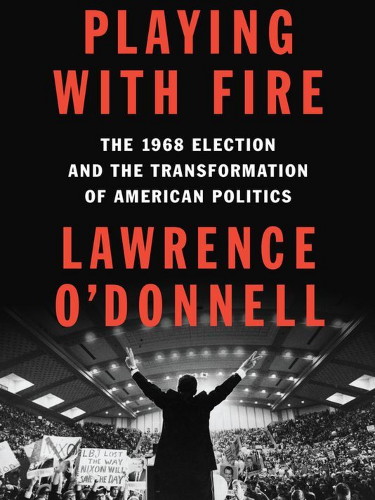
Lawrence O’Donnell’s Playing With Fire: The 1968 Election And The Transformation of American Politics is a tour de force on the year 1968. In doing so, the author must touch on events prior to that fateful year and spill, though briefly, into the year’s aftermath. He relies on published sources without doing original research, despite the availability of the participants’ papers which have since opened up. That being said, Lawrence O’Donnell’s reflections, analysis, and conclusions are riveting and, some, shocking to read. And he offers one of the most succinct descriptions of that time:
“The counterculture explosion of protest, irreverence, generational mistrust, iconoclasm, rebellion, and all the various forms of radical experimentation – – sexual, musical, communal, psychotropic – -began polarizing the nation on questions of basic American values. That explosion’s flashpoint was Lyndon Johnson’s war in Vietnam.”
The overall thrust of the book, though far from its entire focus, is that Minnesota Senator Eugene McCarthy was responsible for bringing the Vietnam War to an end – – ALMOST! There McCarthy stood at the rear of the Senate Foreign Relations Committee on August 17, 1967 to hear Undersecretary of State Nicholas Katzenback state, in essence, that the President, Lyndon Baines Johnson (LBJ), had unlimited power to conduct the Vietnam War based on the trumped up Gulf of Tonkin Resolution of August 7, 1964. Between 1965 and 1967 the number of American troops had grown from 210,000 to 485,000 with 11,000 casualties. “There is no limit to what he says the President can do,” said Senator McCarthy. There was only one thing to do. “Take it to the country. Someone’s going to have to take them on. If I have to run for president to do it,” said Gene McCarthy, “I’m going to do it.” And so the anti-war protesters of Allard Lowenstein had a leader for their “Dump Johnson” movement. Lowenstein’s efforts to enlist a reluctant Robert F. Kennedy to run had failed up to then, despite the chants of “Run, Bobby, Run” at RFK public appearances.
And so, author O’Donnell leads the reader through the wild ride of 1968. – – The Democratic candidates for president; the incumbent President Lyndon Johnson, Eugene McCarthy, Robert Kennedy, and Vice President Hubert Humphrey. – – The Republican candidates; Richard Nixon, George Romney, Nelson Rockefeller, and Ronald Reagan. – – And the Independent segregationist candidate George Wallace. – – And both the monumental and tragic events; Gene McCarthy almost defeating President Johnson in the New Hampshire primary, prompting Robert Kennedy finally to jump into the race, President Johnson announcing that he will not run for re-election, resulting in Vice President Hubert Humphrey’s run, the assassination of Martin Luther King and the resulting riots across the country, the assassination of Robert Kennedy, the Republican Convention in Miami nominating Richard Nixon, and the Democratic Convention in Chicago, characterized as a police riot mowing down protesters and even innocent bystanders with tear gas, Mace, and clubs. Oh, Humphrey wins the Democratic nomination in Chicago over McCarthy, 1,760 delegate votes to 601. Humphrey now faces Nixon in the general election.
The book culminates with the irony of ironies in this tragedy of a year. President Johnson announces on Halloween night, October 31, 6 days before the November election, the halting of U.S. bombing of North Vietnam to advance the Paris peace talks with the hope that the end of the war is now in sight. Secretly, President Johnson gets North Vietnam to agree to negotiate with South Vietnam, accept a demilitarized zone, and end attacks on South Vietnam. And South Vietnam President Thieu agrees that his negotiating team could be in Paris overnight. However, through a Chinese intermediary, the Nixon campaign signals South Vietnam President Thieu to “hold on” for a better deal with a Nixon administration! Three days before election day South Vietnam President Thieu refuses to join any peace talks that include the Vietcong communist guerilla fighters in South Vietnam. Nixon wins the election 43.4% to Humphrey’s 42.7%, Wallace 13.5%. Lawrence O’Donnell ends 1968 with the cost of Nixon’s election win; treason, costing another 20,000 American soldiers’ lives over the next five years, added to the 38,000 already dead, until the war’s end. This is the big picture. The juice behind some of these events is mind-boggling!

Chris Matthews is known to many people as the nightly host of his program, “Hardball,” on MSNBC. He has led quite a career in and out of politics, in the print media as bureau chief and columnist, TV political commentator and host, and author.
Matthews started modestly in Washington, D.C., as an officer with the Capitol Police. He then served on the Congressional staffs of four Congressmen including Senators Frank Moss and Edmund Muskie. Chris Matthews ran an unsuccessful bid in a 1974 primary for a Pennsylvania congressional seat in the House. He distinguished himself as a speechwriter for President Jimmy Carter and especially for six years as Chief of Staff to Speaker of the House of Representatives Tip O’Neal from Massachusetts. He even dallied with the idea of a run for the Senate himself in 2008-2009 that came to nothing.
Chris Matthews worked as bureau chief for the San Francisco Examiner for thirteen years, 1987-2000, and then as a syndicated columnist for the San Francisco Chronicle for two years. In 1997 he began his weeknight TV talk show, “Hardball with Chris Matthews,” still going strong to this day. And, from 2002 until 2003 he hosted a TV political round-table for journalists.
Matthews authored eight best-selling books, the most noteworthy to his latest on Robert Kennedy being; Tip and the Gipper, 2013, Jack Kennedy: Elusive Hero, 2011, Kennedy and Nixon, 1996, and Hardball: How Politics is Played, 1988. While Chris Matthews is, undoubtedly, a liberal Democrat, he has claimed along the way that he is more conservative than people think. – – A graduate of the College of the Holy Cross and a masters in economics from the University of North Carolina. – – Holds 34 honorary degrees and recipient of numerous awards. – – A proud member of the Peace Corps, 1968-1970, serving in Swaziland. – – And a die-hard Irishman born in Philadelphia.

Chris Matthew’s Bobby Kennedy: A Raging Spirit is, no doubt, a labor of love, having myself read his previous books on Jack Kennedy and Richard Nixon. He is clearly drawing from those books here, especially with his Jack Kennedy: Elusive Hero fresh in his mind from 2011. From this knowledge-based platform, Matthews cites two biographies on Robert F. Kennedy that have stood the test of time and on which he relies; the 2 volume Robert Kennedy and His Times, 1978 by Arthur M. Schlesinger, Jr., and Robert Kennedy: His Life, 2000, by Evan Thomas. To these books and other published sources, Chris Matthews adds his extensive interviews conducted for his previous books and adds new interviews with surviving players of RFK’s story and their younger relatives.
The overall mission of the book is to give the reader a true sense of the man that Robert Kennedy was, more than a survey of his eventful life, though it’s all here. That being said, what the author accomplishes is profoundly more. What emerges is that Bobby’s evolution as a person was not as simple as a pre and post Dallas Bobby with the assassination of his brother the President. It was true that before Dallas Robert Kennedy focused on going after “the villains in life” (e.g., Bobby going after Jimmy Hoffa in those Senate hearings) and after Dallas he turned to advancing the causes of “life’s villains” (e.g., Bobby speaking on behalf of the downtrodden from the poor to civil rights, anti-war protesters, and more). But the seeds to this matured RFK were there going back to childhood on forward. The importance to this picture of Bobby being number seven in the lineup of nine siblings in all and always competing for his strong father Joe, Sr.’s approval cannot be over-emphasized. How else could this least athletic Kennedy be the only one to win a varsity letter playing Harvard football? The “ruthless enforcer” image he gained in his political career developed out of his strivings to prove himself to his father. Yet, the close relationship between this son and his mother Rose, and their deeply shared Catholicism, revealed the softer side of Bobby. She recognized his openness and sweetness that made him vulnerable. He had a large heart and generous spirit of compassion for others, especially the downtrodden. Evidence of this side of Bobby manifest itself early-on, more times than once, in prep school, fighting on behalf of oppressed students. His mother Rose witnessed the complexities of her young son when he called upon Boston’s Cardinal Richard Cushing and successfully had a Boston priest excommunicated for preaching “no salvation outside the church.” So the seeds were well-planted, shows the author, for these seemingly conflicting qualities and attributes called upon in RFK’s public life.
Chris Matthews’ treatment of RFK’s 43 year life story is admirable. Considering this is a lighter, more popularized version compared to the in-depth studies previously mentioned by Arthur Schlesinger, Jr. and Evan Thomas, Matthews writes a thorough biography. His life was cut short by an assassin’s bullet immediately after his June 4, 1968 California primary victory and speech at The Ambassador Hotel in Los Angeles, sometime after midnight June 5. Bobby died just over 24 hours later, lingering until June 6, 1968. His public career spanned but 15 years, 1952-1968, and his historic run for the presidency a mere 82 days.
Bobby’s contributions to JFK’s career are well-known. His role in the 1946 campaign to elect his brother to a congressional seat in the House of Representatives was limited to campaigning in one precinct in Boston. The impression of Bobby “the ruthless enforcer” emerges when Bobby takes over Jack’s run for the U.S. Senate in 1952. A major step for the campaign and Jack was Bobby overcoming their Dad, Joe, Sr., and his dominance and direction of the campaign, despite his continued source as the purse strings of the operation. It was in his role as campaign chairman that Bobby began to be perceived as “ruthless” and earned the reputation as being the “enforcer.” It started with his ability to say “no” to supposed volunteers with their hands out for money to get out the vote. Equally important to Bobby’s role is the writing space Matthews devotes to Bobby’s pal and chum from his Harvard football days, Kenny O’Donnell. It was Kenny who was responsible for convincing Jack to bring Bobby on board in the first place to head the Senate campaign. And it was Kenny O’Donnell who is at their side riding the years of Jack’s career all the way into and during the White House years as a top advisor.
Chris Matthews does a competent job explaining the complex and intimate family relationship between the Kennedy family and Republican Senator Joe McCarthy from Wisconsin. While Joe McCarthy and his permanent Subcommittee on Investigations routed out communists, Bobby’s assignments on that committee, as assistant counsel, then deputy staff director, and finally as Democratic Counsel, stayed clear of Joe’s witch-hunt of communists in the State Department and elsewhere. Bobby is given credit for investigating trade by U.S. allied countries aiding the enemy during the Korean War. Bobby goes on to earn high marks at his Senator brother Jack’s side as Chief Counsel on the Senate Rackets Committee grilling Teamster President Jimmy Hoffa. Here Bobby finally wins the long desired regard and recognition of his father, Joe, Sr.
Now the author moves into Bobby’s role as campaign chairman of Jack’s 1960 successful run for the presidency. We see the evolving animosity between Bobby and Lyndon Johnson, who becomes JFK’s VP, getting worse as the years unfold. The seeds went back to LBJ’s gossip about Joe, Sr. as an “appeaser” while serving as FDR’s Ambassador to the UK prior to WWII. This bad relationship just gets worse over the years even until Bobby’s death. The book goes on to Bobby’s role as chief advisor to President Kennedy as his Attorney General, from the Cuban Missile Crisis to the emerging stance and actions taken on behalf of the civil rights movement, and against organized crime & more.
Where the real Bobby Kennedy emerges in the book is when Bobby is elected to the U.S. Senate, after JFK’s death, from the State of New York. Bobby is mentored by the Senator from Massachusetts, his brother, Senator Edward M. Kennedy, first elected to the Senate in 1962 to fill JFK’s seat and for his first full-term in 1964, the year Bobby is elected. “Not since 1803 had a pair of brothers served simultaneously in the United States Senate.” The brothers are sworn in together, January 1965. Matthews does a priceless job describing Teddy signaling Bobby right on the floor of the Senate how to cast his votes! – – “Edward Kennedy” coming before “Robert Kennedy” in the roll-call votes lets Teddy nod his head to Bobby. – – Even to a misunderstanding of their “nod signals” and Bobby having to change his vote! But it is here in his role as Senator that those childhood seeds of sensitivity and, yet, assertion, come together in Bobby. He is passionate about the plight of the downtrodden in our society; the poor, the cause of the growing anti-Vietnam war protesters, civil rights, Cesar Chavez’s migrant farm workers, and others in our society in need.
And finally, there is Bobby’s on again-off again hesitation to get into the 1968 race for the presidency; whether to lead the anti-war movement and all the protesters, whether to challenge a sitting President, whether to divide the Democratic Party, whether to run prematurely when his sights were on the 1972 election as his year. His father always counseled not to run too soon, but brother Jack cautioned about getting in too late! As Matthews tells it, that all ends with Senator Eugene McCarthy’s entry into the New Hampshire primary and his “almost” victory over LBJ with 47% to McCarthy’s 42%. Bobby is in! Then LBJ puts himself out of the running for re-election to focus on bringing the war to an end. The pace quickens. Martin Luther King is assassinated in Memphis, April 4, 1968, and Bobby informs the people of the loss while speaking on the campaign trail in Indianapolis, Indiana. There are no riots in Indianapolis attributed to Bobby’s personal words, having known great loss in his family, as riots, burning, and looting spread across the nation. Now come the primaries with McCarthy vs. Kennedy; Indiana, Nebraska, Oregon, and then California. Bobby wins them all decisively but for Oregon. Oregon was Bobby’s first experience with a loss ever as either campaign manager or as a candidate. Just before the California primary, Bobby Kennedy and Gene McCarthy hold a debate. The debate is a draw. But the California primary left no doubt with RFK 46% to McCarthy 42%.
Chris Matthews ends Bobby Kennedy poignantly. “An exhausted Bobby spent primary day, June 4, with his wife and family…By evening, with projections showing Robert Kennedy the winner…he summed up how the moment seemed to him. ‘You know I feel now for the first time that I’ve shaken off the shadow of my brother. I feel I made it on my own.’ ” Bobby was due within the hour to make that fatal victory speech at The Ambassador Hotel in Los Angeles.
Excuse us for living through these tumultuous times with all the turmoil of 1968. Lawrence O’Donnell and Chris Matthews have given us pause with their books. My written account here has run on much too long. And yet, I have another entire page of things that impressed or surprised me from these books from which I will spare you.
Comments: Please!
Sources:
Playing With Fire: The 1968 Elections And The Transformation of American Politics
Bobby Kennedy: A Raging Spirit
wikipedia.org
content.time.com


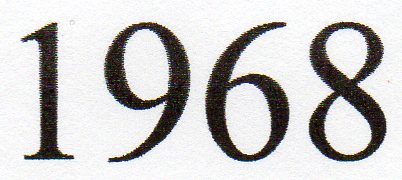



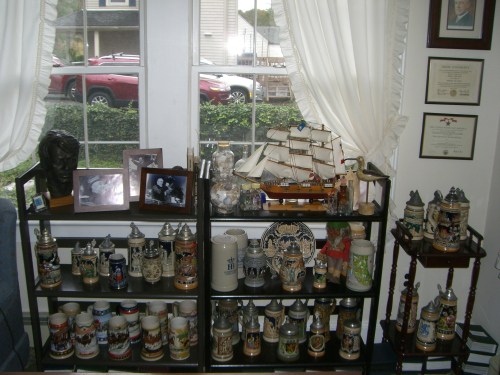




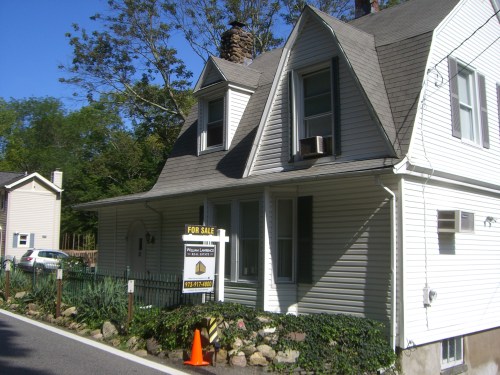
















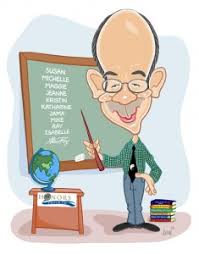

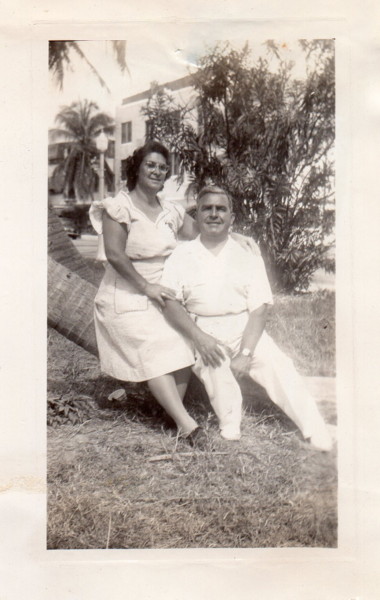



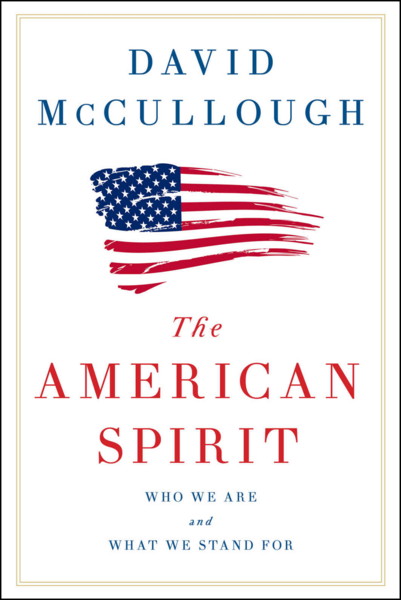











Books!
Collecting, Discarding, or e-Books:
What do you say?
by
Philip Fontana
Excuse us for living, but throughout our lives both wife Geri and I have loved and collected books. We just love our books and can’t say it enough. All the while, we have seen the change over the years to e-books or “read and discard” books at best. What is your preference? What do you do?
We have never considered the many linear feet of books on our bookshelves as “our library.” Rather, we enjoy every individual title. Some we have read. Others just sit there in case we “get a fancy” to read it. – – College books, a book subscription years ago from The Franklin Library, books from antique shops and consignment shops, and, naturally, bookstore purchases and, oh, that Amazon online! – – Hardcover, paperback, new or used, free shipping?
We talk so about our “too many books” apologetically in this day and age. In an age of the Kindle and other electronic e-book/reading devices, many people see the physical books as “space wasters.” Even people who still appreciate and enjoy the feel and experience of reading a book in their hands, many people discard a book once read. Indeed, libraries are digitizing their collections! And as we, ourselves, look to downsize to a condo or townhouse, with the “For Sale” sign up on our old 1885 Dutch Colonial as I write this, the question arises as to how many books will a new place accommodate? And what about you? Do you have a book collection? Do you discard books after reading them? Do you read e-books?
This is our living room book case with mostly classics from The Franklin Library from Keats, Poe, Hawthorne, Joyce, Melville, Kipling, Dickens, and so many more. – – The other books here are largely a collection of books on art, music, and religion.
Here is our enclosed porch or family room bookshelves with books most personal to me. There are college books from my BA at Rutgers U. in history and my MA at Drew U. in political science. – – And then the many books on history, biography, and politics, that I have read, mostly. Special to me is my small collection of books on each of these figures in America’s 20th century story; Teddy Roosevelt, Woodrow Wilson, Franklin Delano Roosevelt, Richard Nixon, John F. Kennedy, Lyndon Baines Johnson, Bobby Kennedy, Ted Kennedy, and Jimmy Carter. – – Plus the complete works of David McCullough! Anyone into First Editions?
In one bedroom are books surrounding wife Geri’s desk and laptop. These books reflect Geri’s lifelong passion reading romance novels. Geri’s favorite author? – – Nora Roberts! – – There are more romance novels elsewhere in the house! – – Many more!
The other bedroom I dominate with our PC and the overflow bookshelves here with TOO MUCH memorabilia crammed in front of the books! – – Everything from more college books to classic titles, biographies and autobiographies from showbiz personalities, and, on the lowest two shelves, left and right, my treasured collection of books handed down to me from my grandfather and namesake, Philip Fontana. – – My favorite is his 1940 copy of Mark Twain’s “Huckleberry Finn,” illustrated by Norman Rockwell! The most precious, rare, valuable book here I found at a flea market bookstore for $2.00 way back when; an 1886 publication of Dante’s “The Divine Comedy,” translated by Henry Wadsworth Longfellow!!! – – Once, a literature professor I met was so in awe of it, he asked if I would permit him to photocopy it, which I did.
Excuse us for living in one house for 43 years because there are four additional, though less substantial, book cases in the house besides those pictured here and a few other assorted shelves and spots for books! The question remains as to how many books we can take with us to a condo or townhouse. Clearly, we must part with some of these books. And we look to store away some of the books in our new place. We could never reproduce the wonderful bookshelf space we have enjoyed here in our home all these years! What about you? Where do you stand on collecting books? Leave a comment below!
Sources: Many volumes of books!
Comments: Please!
24 Comments
Posted in Announcement, Book Reviews, Commentary, Education, History, House, National Politics, New Jersey, Our Old House, Public Policy, Rutgers, Uncategorized | Tags: autobiography, biography, books, bookshelves, collecting books, Dante, David McCullough, discard books, Drew University, e-books, FDR, Henry Wadsworth Longfellow, History, Huckelberry Finn, Jimmy Carter, JKF, LBJ, libraries, Mark Twain, Nora Roberts, Norman Rockwell, political science, politics, RFK, Richard Nixon, romance novels, Rutgers University, Teddy Kennedy, The Divine Comedy, The Franklin Library, TR, Woodrow Wilson